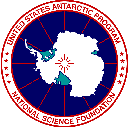Antarctica Austral Summer 2003-2004
 
Gregory McQuoid |
| Home | Cape Evans | Eclipse | Discovery Plus | McMurdo Living | Radiosonde | Penguins | Geocaching | Misc | Cloud Hole | South Pole 04 | South Pole.com | |

|
|
http://www.vaisala.com/DynaGen_Attachments/Att24026/RS80New.pdf
Unpacking a 200 gram ballon.
|

|
|
Unfolded balloon and still warm from the heated cabinet.
|

|
|
Turning on the helium for the fill.
|

|
|
Preping the balloon for fill.
|

|
|
The balloon is full when the 50 gram weight lifts off the table.
|

|
|
Tying off the balloon and attaching the radiosonde package.
|

|
|
Walking out for launch.
|

|
|
...and release for it journey up to about 70,000 feet here in the Antarctic.
Some go up to 113,000 feet in warmer climates. You can see Scott's Discovery hut in the background. Even in his days they launch balloons and followed the string attached (I believe for miles after it came down) to recover the insturments that recorded the data.
|

|
|
Over the Ice dock.
|

|
|
Higher...
|

|
|
...and higher
|

|
|
Recieving station.
|

|
|
The raw data above and plotted data below. Radiosonde observations are applied to a broad spectrum of efforts. Data applications include:
Input for computer-based weather prediction models;
Local severe storm, aviation, and marine forecasts;
Weather and climate change research;
Input for air pollution models;
Ground truth for satellite data
|

|
|
What is a Radiosonde?
For over 60 years, upper air observations have been made by the National Weather Service (NWS) with radiosondes. The radiosonde is a small, expendable instrument package that is suspended below a 2 meter (6 feet) wide balloon filled with hydrogen or helium. As the radiosonde is carried aloft, sensors on the radiosonde measure profiles of pressure, temperature, and relative humidity. These sensors are linked to a battery powered, 300 milliwatt radio transmitter that sends the sensor measurements to a sensitive ground receiver on a radio frequency ranging from 1668.4 - 1700.0 MHz. By tracking the position of the radiosonde in flight, information on wind speed and direction aloft is also obtained. Observations where winds aloft are also obtained are called "rawinsonde" observations.
The radiosonde flight can last in excess of two hours, and during this time the radiosonde can ascend to over 35 km (about 115,000 feet) and drift more than 200 km (about 125 miles) from the release point. During the flight, the radiosonde is exposed to temperatures as cold as -90 o C (-130 o F) and an air pressure only few thousandths of what is found on the Earth's surface. When the balloon has expanded beyond its elastic limit and bursts (about 6 m or 20 feet in diameter), a small parachute slows the descent of the radiosonde, minimizing the danger to lives and property.
Only about 20 percent of the approximately 75,000 radiosondes released by the NWS each year are found and returned to the NWS for reconditioning. These rebuilt radiosondes are used again, saving the NWS the cost of a new instrument. If you find a radiosonde, follow the mailing instructions printed on the side of the instrument.
Although all the data from the flight are used, data from the surface to the 400 hPa pressure level (about 7 km or 23,000 feet) are considered minimally acceptable for NWS operations. Thus, a flight may be deemed a failure and a second radiosonde is released if the balloon bursts before reaching the 400 hPa pressure level or if more than 6 minutes of pressure and/or temperature data between the surface and 400 hPa are missing.
Worldwide, there are nearly a 900 upper-air observation stations. Most are located in the Northern Hemisphere and all observations are usually taken at the same time each day (00:00 and/or 12:00 UTC), 365 days a year. Observations are made by the NWS at 92 stations - 69 in the conterminous United States, 13 in Alaska, 9 in the Pacific, and 1 in Puerto Rico. NWS supports the operation of 10 other stations in the Carribean. Through international agreements data are exchanged between countries.
How Are Radiosonde Data Used?
Understanding and accurately predicting changes in the atmosphere requires adequate observations of the upper atmosphere. Radiosonde observations are the primary source of upper-air data and will remain so into the foreseeable future.
Radiosonde observations are applied to a broad spectrum of efforts. Data applications include:
Input for computer-based weather prediction models;
Local severe storm, aviation, and marine forecasts;
Weather and climate change research;
Input for air pollution models;
Ground truth for satellite data
|

View My Guestbook
Sign My Guestbook
Antarctica Illustrated Picture and Coffee Table Books
http://www.ocean.udel.edu/neatstuff/McMurdo/history.htmlBooks